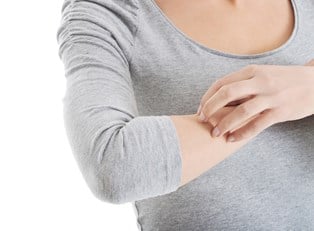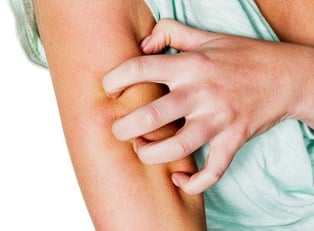Atopic dermatitis, which is the most common form of eczema, is a condition marked by dry, itchy patches of skin brought on by the skin’s inability to hold moisture. This condition is frequently painful and may cause embarrassment to patients if their breakouts occur on highly visible parts of the body. There is no ultimate cure for atopic dermatitis, but thankfully there are several treatments that can help make symptoms more manageable. Here is a look at some of the most common forms.
At-Home Treatments
Treating atopic dermatitis with at-home remedies is often the first line of defense against this condition. For people with only mild cases, these lifestyle changes may be enough to limit the time and severity of their outbreaks. However, those with more aggressive forms of atopic dermatitis may require stronger treatments in conjunction with their at-home ones.
Keeping the skin moisturized is one of the most important aspects of controlling this condition. At home, this should involve both drinking enough water and regularly applying moisturizing lotion to breakout areas. There’s still some controversy surrounding how much water a person should drink daily to stay hydrated, but a good rule of thumb is to drink until you’re no longer thirsty. In terms of choosing a moisturizer, it’s best to go with an unscented brand, as scented products may irritate the skin even more than it already is.
It’s also important for atopic dermatitis patients to locate and avoid environmental triggers that can make their condition worse. These most commonly include things like pet dander, dust, certain detergents, and household cleaning products. Additionally, food allergies may also be a potential trigger.
Topical Products
There are both over-the-counter and prescription topical products available for treating atopic dermatitis. Typically, doctors will first recommend that patients try the over-the-counter products, but if their breakouts are particularly severe, stronger products will probably be necessary.
Creams and ointments containing hydrocortisone help reduce inflammation related to breakouts and may help reduce the urge to itch. These products are available over-the-counter and are typically found with other allergy medications. If hydrocortisone is ineffective, doctors may prescribe an ointment containing corticosteroids—which is simply a more powerful version of hydrocortisone. However, products containing it must be used sparingly due to its potentially problematic side effects, which include infections, thinning of the skin, and stretch marks.
If both hydrocortisone and corticosteroids fail to reduce symptoms, doctors may also prescribe products containing calcineurin inhibitors. This drug both helps prevent new outbreaks from occurring and helps repair damaged skin from previous ones. However, as with corticosteroids, these products come with serious side effects, such as an increased risk of skin cancer.
Oral Medications
Oral medications are used to address both the itching and inflammation caused by atopic dermatitis. Allergy medications containing antihistamines (such as Benadryl) help reduce sensations of itchiness and help prevent patients from scratching their outbreaks. However, medications like these may cause drowsiness and therefore should be used with caution. Additionally, doctors may prescribe oral corticosteroids that act similarly to the topical products that contain them.
Medical Therapies
Certain forms of medical therapy have been shown to be effective at treating atopic dermatitis as well. One of the most common is phototherapy. This involves patients being exposed to UV light—which has been shown to reduce the severity and frequency of breakouts. Patients may choose to receive exposure through natural sunlight, but UV lamps are also available for indoor therapy. Regardless of the method, exposure should occur on a regular basis but should be brief, as prolonged exposure has been linked to premature aging and skin cancer.
Wet dressing, which involves wrapping a patient in bandages soaked with water and corticosteroids, has the potential to reduce the severity of breakouts in a matter of hours. However, this process can be quite complicated and requires training to perform.




